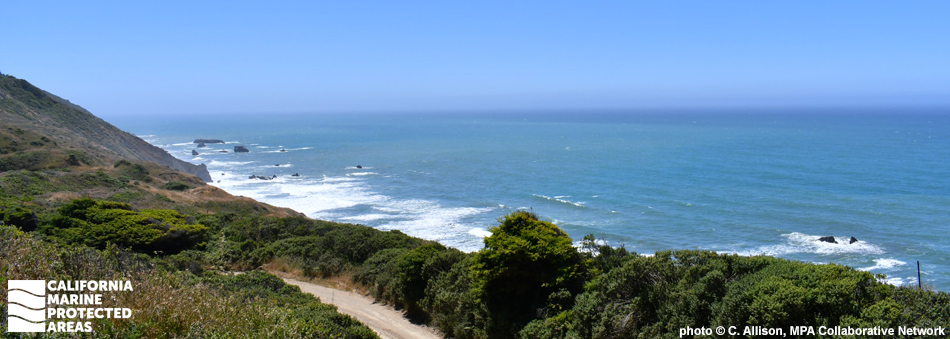
Overview
Double Cone Rock State Marine Conservation Area (SMCA) is located off a remote stretch of coastline in Mendocino County, just over 20 miles north of Fort Bragg. This marine protected area (MPA) covers roughly 18 square miles and consists of sandy beaches, rocky intertidal shores, sandy and rocky seafloor habitat, and a small kelp forest.
This SMCA was designated in 2012 to protect bottom-dwelling marine species in rocky and sandy seafloor habitats. The sandy seafloor supports flatfish such as Pacific halibut, California halibut, and rock sole. Recreational take of salmon by trolling and Dungeness crab by trap, hoop net, or hand is permitted within Double Cone Rock SMCA since these support lucrative local industries. Vizcaino Rock Special Closure, a hot spot for breeding seabirds, lies at the south end of Double Cone Rock SMCA. As native environmental stewards of this stretch of the coast, over 15 federally recognized tribes in this region are exempt from MPA regulations.
Regulations
It is unlawful to injure, damage, take, or possess any living, geological, or cultural marine resource, EXCEPT:
Recreational take of salmon by trolling and Dungeness crab by trap, hoop net or hand is allowed. Commercial take of salmon with troll fishing gear and Dungeness crab by trap is allowed. Includes take exemptions for the following tribes:
- Big Valley Band of Pomo Indians of the Big Valley Rancheria
- Cahto Indian Tribe of the Laytonville Rancheria
- Coyote Valley Band of Pomo Indians
- Elem Indian Colony of Pomo Indians of the Sulphur Bank Rancheria
- Guidiville Rancheria
- Habematolel Pomo of Upper Lake
- Hopland Band of Pomo Indians of the Hopland Rancheria
- Lower Lake Rancheria
- Manchester Band of Pomo Indians of the Manchester-Point Arena Rancheria
- Middletown Rancheria of Pomo Indians
- Pinoleville Pomo Nation
- Potter Valley Tribe
- Redwood Valley Rancheria of Pomo Indians
- Robinson Rancheria of Pomo Indians
- Round Valley Indian Tribes of the Round Valley Reservation
- Scotts Valley Band of Pomo Indians
- Sherwood Valley Rancheria of Pomo Indians
California Code of Regulations Title 14, Section 632(b)(16)(opens in new tab)
Quick Facts
MPA size: 18.49 square miles
Shoreline span: 4.9 miles
Depth range: 0 to 391 feet
Habitat composition*:
- Rock: 3.55 square miles
- Sand/mud: 17.03 square miles
*Habitat calculations are based on three-dimensional area and may exceed the total MPA area listed above.